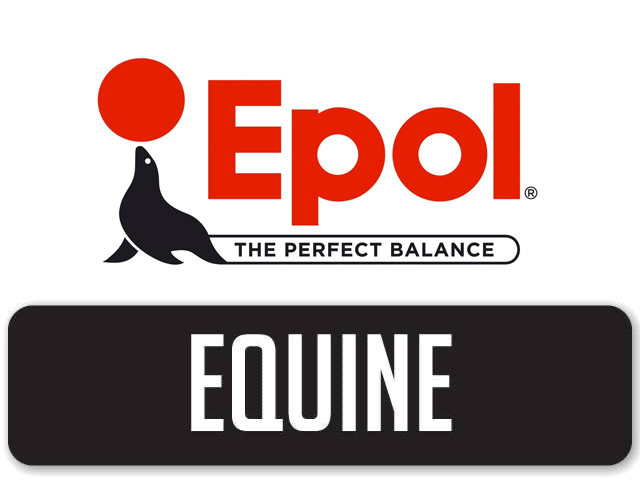In our last article we looked at the wording and basic information found on feed labels. This month we look at the nutritional information in more depth to help you understand what you are reading.
The Nutrient Analysis In South Africa, the only things that must by law be specified on a label as required by Act 36 of 1947 are:
– a minimum level of Crude Protein
– a maximum moisture level – a minimum level of Crude Fat
– a minimum and maximum level of Crude fibre
– a minimum level of Phosphorus.
– a specified Calcium to Phosphorus ratio All the nutrient information legally required can easily be printed on a small bag tag.
The well-informed horse owners of today, however, usually require more detailed information regarding their horses’ nutrition. Manufacturers of high quality horse feeds, thus, provide more information than the minimum requirements and since it is usually impossible to fit this on a single bag tag, further information can be found on their websites and brochures.
Crude Protein
Crude protein is called “crude” because the analysis used in its determination doesn’t actually measure protein at all. Instead, the analysis used by laboratories measures the nitrogen (N). The protein value is then calculated by multiplying the figure for nitrogen by 6.25. In South Africa, feeds are often referred to by their protein content, for example, whether a feed is a 12% or 15%. However, although the crude protein percentage is an important indicator of the protein level used, it is important to remember that the crude protein level is not an indicator of the protein quality or digestibility. In terms of digestibility, not all of the protein included in the diet will be digestible by the horse. There will always be a certain amount of protein that the horse’s gut cannot utilise. Deducting a % (which could be as much as 2-5% depending on the profile of the raw materials used) of the crude protein value stated will give a rough digestible protein level of the feed, allowing one to gauge how much of the protein in the diet can be utilised. A 12% Crude protein, thus, could mean that a horse is only able to utelise 7-10%.
Manufacturers of good quality products will therefore adjust the Protein levels in their diets in order to compensate for the digestibility of the protein sources included in these diets. Unfortunately, labels do not specify this information but manufacturers usually provide this information elsewhere e.g. website and brochures. More importantly, the crude protein percentage doesn’t disclose what the sources of protein are or how good their amino acid profiles are. To get a better idea of the protein quality one needs to examine the amino acid values (lysine, methionine etc.).
Amino acids are the building blocks of protein and muscle tissue and aid with many physiological processes such as muscle hypertrophy, fat loss, and strength gains to name a few. Amino acid levels also need to be balanced. Lysine is normally the first limiting amino acid and companies that indicate the lysine level of a product are obviously aware of the importance of the amino acid balance and therefore their products may be a better choice than those which do not provide this information at all. Good quality protein is expensive so any company using high value protein ingredients will automatically advertise this fact. When considering protein percentage, remember that it is important to use the correct level for the specific requirement (ie the horse’s workload, age etc.). A feed with a higher protein percentage is not necessarily a better feed, or better for your horse. It is also important to remember that the Protein % does not disclose how much energy there is in a product. The two often go hand in hand, however, some products, such as balancers for example, can be low in energy but high in protein.
Read more on Protein: http://oldphp.obdweb.co.za/Equusfeed/powerful-protein/
Moisture
Moisture content reflects the amount of water present in the feed. Dry matter therefore refers to the material remaining after removal of water and is an indicator of the amount of nutrients that are available to your horse for maintenance, growth, pregnancy, and / or lactation. Fresh pasture, for example, has a high water content and will have a much lower percentage of dry matter than an equivalent weight of your horse feed. Moisture content is calculated by drying a sample in an oven (under specified conditions) and is important for the calculation of the actual dry matter. The maximum moisture level allowed for registration is 12% which means the product will have 88% dry matter. Different products can, strictly speaking, only be evaluated and compared when based on the same actual dry matter basis but for all practical purposes most products will be registered with a 12% maximum moisture content. When the moisture content is too high the product will tend to form mould more easily. Feed with a very low moisture content will be too dry and can lead to respiratory irritations. It is important to remember that humidity and the ambient moisture content of the air around us can greatly affect the moisture content of the feed shortly after manufacturing. Good horsemanship and the feel of the product is therefore more important than what the bag tag says regarding moisture content.
Crude Fat
Crude fat is the traditional measure of fat in feed products and refers to the crude mixture of fat-soluble material present in a feed, also known as the ether extract or the free lipid content. Fat is energy-dense, providing almost 2.5 times as much energy as carbohydrates. Therefore, the higher the crude fat value, the higher the calories per kg of feed, meaning that less food is needed to provide the same calories as a carbohydrate rich feed. This is beneficial for the horse’s gut, as large amounts of carbohydrate rich feed can upset the digestive tract. Fat-supplemented feeds are excellent for horses in high-performance sports like endurance racing, three-day eventing, polo, or for those with dietary issues such as Tying up, where high levels of grains cannot be used. The average horse feed that is not fat-supplemented will only meet the minimum legal fat requirement of 2.5% crude fat. Preferably if you are looking for a fat supplemented feed choose a product with a fat value of between +- 4 and 6.5%. Always be aware that products with much higher fat values (8%+) can easily become rancid. Further, it is important to note that not all fats are equal so, when comparing products, study the ingredient list and ascertain whether high quality omega-3 rich oils are used. Once again, companies registering only the minimum required fat levels throughout their product range are unlikely to pay attention to the actual quality of the fats or oils used.
Read more on fats via our website: http://oldphp.obdweb.co.za/Equusfeed/using-oils-in-equine-diets/




